Civil aviation in Russia was at the forefront of the sanctions war. So far, everything seems to be in order: to pretend that the situation is under control, allows a sharp reduction in flights abroad, stocks of components and problems in other areas, against the background of which the deterioration of the situation in the aviation industry can be ignored for the time being.
However, the inevitability of the collapse is evidenced by such factors as, for example, mass layoffs of pilots. According to Miroslav Boichuk, the president of the flight crew trade union, a thousand people lost their jobs in six months, although there are only a little more than nine thousand pilots in the country. The Sheremetyevo trade union of flight personnel claims that airlines are trying to reduce people at any cost. For example, it was reported that the Pobeda low-cost airline wants to fire up to 170 pilots while reducing the fleet to 30 ships, although the airline itself denies any plans in this regard, but they don’t talk about what is planned to be done with a reduction in the number of flights. And it is inevitable.
There are 9,000 pilots in Russia, a thousand of them lost their jobs in six months
It was impossible to prepare for a sanctions strike with all the will, since all the consistent development of airlines and industries, technological and business systems created since the 1990s, were literally reset to zero in an instant.
Instant sanctions and theft of leased aircraft
For air transportation in the country, as, indeed, throughout the world, in recent decades, two pillars of world civil aviation have been responsible – the American Boeing and the European Airbus. The largest Russian airline, Aeroflot, has long abandoned the use of Soviet Tu-154Ms – the last flight took place on December 31, 2009. At that time, the carrier's fleet operated more than a hundred new Airbus and Boeing aircraft. According to Vitaly Savelyev, who headed the company at that time, modern aircraft allowed it to occupy 30% of the Russian civil transportation market. The second largest carrier at that time, Transaero, had 47 aircraft, of which only three were Russian Tu-214s. S7 Airlines, which ranked third, operated 32 ships, all Boeing and Airbus.
The development of the Sukhoi Superjet 100 short-haul liner supported the domestic aircraft industry in terms of numbers, although due to the number of foreign technologies used, it in no way removed the issue of dependence on imports. By the beginning of 2022, Russian aircraft occupied 18% of the fleet (excluding business jets and helicopters) of the 20 largest domestic carriers in terms of passenger traffic. Another 39% came from European aircraft, 36% from American aircraft, 4% from Canadian aircraft, and the remaining 3% from Brazilian aircraft.
Sanctions against Russia, as practice has shown, can be worked out for months, and come into force even after six months, like, for example, a partial oil embargo, but no one began to stand on ceremony with aviation. Already on February 26, the European Union deprived Russian airlines of the right to use European aircraft. New deliveries, maintenance of already purchased liners and insurance of all boards were prohibited. The restrictive measures also included the mandatory return of aircraft received under leasing contracts within a month, until March 28.
The Cirium agency calculated that by that time 55% of the entire Russian aviation fleet was leased from international companies. 980 airliners operated on passenger lines, foreign owners owned 515 aircraft worth about $ 10 billion. Savelyev confirmed this statistics at the end of March, who, after leaving Aeroflot, headed the Ministry of Transport.
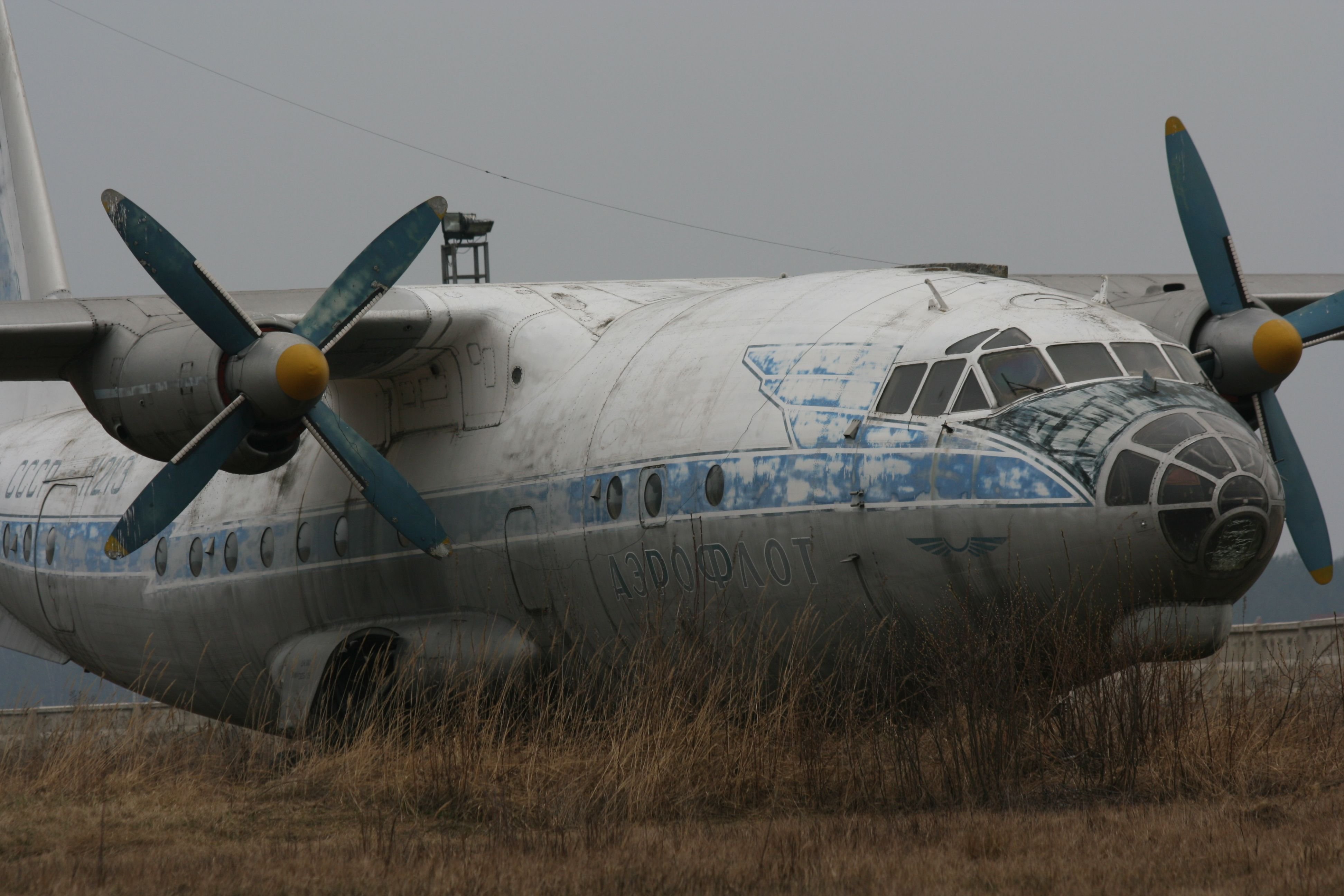
A week after the start of the war, Boeing and Airbus suspended cooperation with Russian airlines, including in the supply of spare parts. Boeing also stopped the work of its divisions in Moscow. The next day, Embraer announced similar measures, although Brazil is a member of the BRICS and did not impose sanctions against Russia. The last of the world's major aircraft manufacturers to stop deliveries on the same terms was the Canadian Bombardier.
To obey the ultimatum of the collective West would mean to stop most of the traffic in Russia, so the Kremlin took the path of nationalization. On March 14, President Vladimir Putin signed a law allowing registration of rights to foreign aircraft leased by Russian companies and issuing airworthiness certificates to them. For a week, more than 800 boards were included in the register. From the point of view of international law, these actions are theft, so the departure of each of these aircraft outside of Russia is fraught with arrest and return to the owner.
Perpendicular import. No details to look forward to
The forced decision was of a momentary nature and did not remove the main problems, on the contrary, it created another one. The rewriting of hundreds of boards put an end to relations with international manufacturers, leasing and insurance companies in the foreseeable future. And the main trouble was that the nationalized liners would have to be serviced and repaired using parts that Russia does not produce.
Parallel imports, which were initially looked at by the industry, immediately failed. Experts and officials called China the most obvious supplier under this scheme. But he immediately made it clear that he was not going to conflict with foreign partners. So, on March 10, Valery Kudinov, head of the department for maintaining the airworthiness of aircraft of the Federal Air Transport Agency, stated that spare parts would have to be looked for in other countries. Later it became known that China requires cargo transportation to Russia only on Russian-made aircraft, airports do not accept foreign airliners. It is obvious that the sanctions were also the reason, and the PRC does not intend to violate them. As Russian Ambassador to China Andrey Denisov, later dismissed, explained in September, the Chinese economy is highly dependent on trade with the West and will not spoil relations with it because of Moscow.
Talks about the supply of aircraft parts from Turkey did not lead to any concrete result, so the only country that agreed to cooperate with Russia on this issue was Iran. In July, the parties signed an agreement on the supply of Iranian aircraft equipment and maintenance services. The Islamic Republic, which has been living under sanctions for decades, does indeed have experience of informally servicing Western-made liners. However, how exactly it can help Russia is unknown. The fact is that the basis of Iran's fleet is made up of very old aircraft. The average age of the airliners of the state-owned company Iran Air is over 19 years old, and some Iranian aircraft are more than 30 years old.
Only Iran agreed to cooperate with Russia on the supply of spare parts
In Russia, there is a much younger park, which requires different competencies in maintenance. In addition, in 2021, Iran indicated that more than half of the country's fleet could not fly due to a lack of parts. Expecting a country unable to find parts for its aircraft to be able to seriously help a partner whose fleet is at least five times larger seems overly optimistic. Experts do not rule out that Iran could increase the purchase of aircraft parts through its channels in order to transfer the surplus to Russia, but it will clearly not be enough.
As a result, the other day the Russian Ministry of Transport proposed to allow the maintenance and repair of foreign aircraft using non-original spare parts manufactured "according to the procedures of countries that are leading in the global aviation community." Experts urge not to have illusions about how safe flights will be in this case.
Cannibalism that must not be named
Unable to find a way to buy aircraft parts the same way they buy cell phones, the Russian authorities decided to test the waters in a different direction. The Ministry of Industry and Trade asked air carriers and service companies to provide data on the range and quantity of necessary spare parts in order to understand whether they can be produced in Russia. At the same time, the department was fully aware that the Russian aircraft industry did not have the competencies for such production, and they had not previously tried to produce consumables for maintenance on their own.
Marat Nigmatullin, deputy technical director of the Tulpar Technic maintenance provider, explained that the latter circumstance will definitely make itself felt. In particular, after 700 hours of flight, the liner needs to change the oil filter. Operators have some reserves, but they are finite. Filters are not being delivered; it takes two to three years to start production in Russia. In this case, only the certification of the replacement should take at least a year, otherwise the risk of malfunctions will increase significantly.
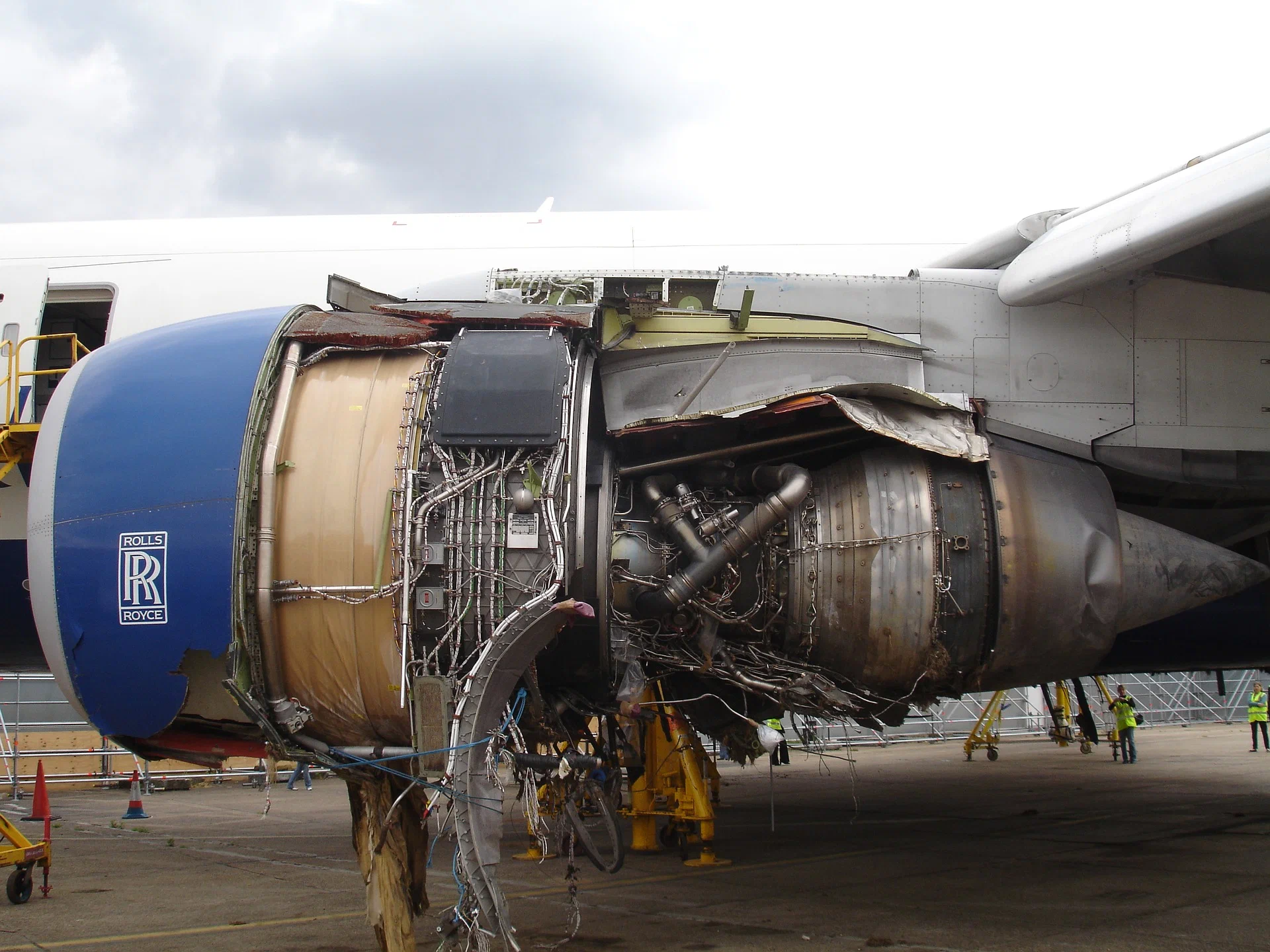
It is much more difficult, if not impossible, to copy more complex details, and this practice has not received wide distribution in the world. The fact is that different technical processes lead to the production of parts that may be similar in appearance, but have different characteristics from each other, which do not allow for safe operation with the declared properties. Even China did not dare to follow this path in the field of aviation, having achieved tremendous success in borrowing foreign technologies. For example, back in 2020, Beijing purchased Russian D-30KP-2 turbofan engines for its Xian Y-20 military transport aircraft and did not try to produce them on its own. Instead, a completely custom WS-20 motor was developed .
Judging by indirect signs, the Russian authorities, at least in April, were still thinking about copying. At least then, the Ministry of Industry and Trade requested original parts in the amount of at least five units in order to conduct a 3D scan, investigate the composition of the material and determine its strength properties.
Already in June, Yuri Borisov, then Deputy Prime Minister, admitted that cannibalization was indispensable . At the St. Petersburg International Economic Forum (SPIEF), he said that as the fleet degrades, airlines will most likely have to disassemble some liners and put parts on others. In August, airlines asked the Ministry of Transport to legalize such a process, and to allow carriers to share details with each other, a decision is likely to be made . At the same time, Deputy Prime Minister Denis Manturov asked not to use the word "cannibalism" and called the process a normal world practice.
However, the airlines themselves have long been prepared for such a situation. In March, the head of the Pobeda low-cost airline Andrey Yurikov said that in order to ensure flight safety and close the need for spare parts, the fleet will be reduced from 41 aircraft to 25. In June, it became known that Azur Air would reduce the number of aircraft in the flight schedule to 12 (in February, the airline had more than 30 boards, by the summer there were 22 left). The reason was also called the preservation of the resource of aircraft.
Not a super jet. sovereign failure
The main mantra of officials responsible for civil aviation, against the backdrop of the shock that happened, was assurances of the imminent release of several hundred modern, completely domestic liners. Thus, Manturov, as part of the SPIEF , announced the readiness of the industry to produce a thousand new aircraft by 2030, including more than 550 aircraft to replace Boeing and Airbus. The same figures are given by the head of the state corporation "Rostec" Sergey Chemezov, even arguing that 110 aircraft of the MS-21, Tu-214 and Il-114 types will be ready by 2025.
The government agreed to allocate more than 770 billion rubles for the implementation of the prepared program for the development of the aviation industry in the period up to 2030. The aviation industry has been tasked with increasing the share of domestic aircraft from the current 33% to 81%, while the authors of the task recognize both the delay in the production of airliners and the faster failure of foreign-made aircraft as the main dangers in the implementation of the program.
At first glance, the approach looks sober, but there is a nuance. There is no need to talk about any 33% of Russian aircraft, since the main pride of the Russian aviation industry, the Sukhoi Superjet 100, in terms of maintenance, depends on the West no less than foreign ships, and even Iran will not help with its repair.
Superjet depends on Western parts like Boeing, and even Iran will not help with its repair
The situation with the release of the SSJ-100 on the world market can be described in one word – failure. The companies that used the Russian liner either went bankrupt (Armenian Armavia, Mexican Interjet), or abandoned it and returned all the boards – this is what the Irish low-cost airline CityJet did .
All the attractive conditions and discounts crashed on the extremely poor after-sales service. Planes often broke down, and the necessary parts had to wait for months. In terms of average daily flight time – one of the most important indicators for efficiency – the SSJ-100 was inferior to its competitors. For example, in 2017, according to Russian airlines, Superjet had 3.3 hours a day, while its competitor Embraer E170 had 6 hours.
The cause of the problems was the SaM146 engine, created specifically for the project. It is produced by PowerJet, the founders of which are the Russian NPO Saturn and the French Safran (formerly Snecma). At the facilities in France, the hot part of the engine is produced (gas generator as part of a high-pressure compressor, combustion chamber and high-pressure turbine), and in Russia – the cold part (fan, low-pressure turbine), general assembly and installation on the airframe. Interestingly, Safran has enough experience in the production of engines, but only in the unit created with Russian participation such serious problems arose. The real resource of a raid without repair turned out to be three times lower than stated. The Russian side demanded to solve the problem, but Safran, amid the failed sales of the liner, refused to invest serious funds in its completion.
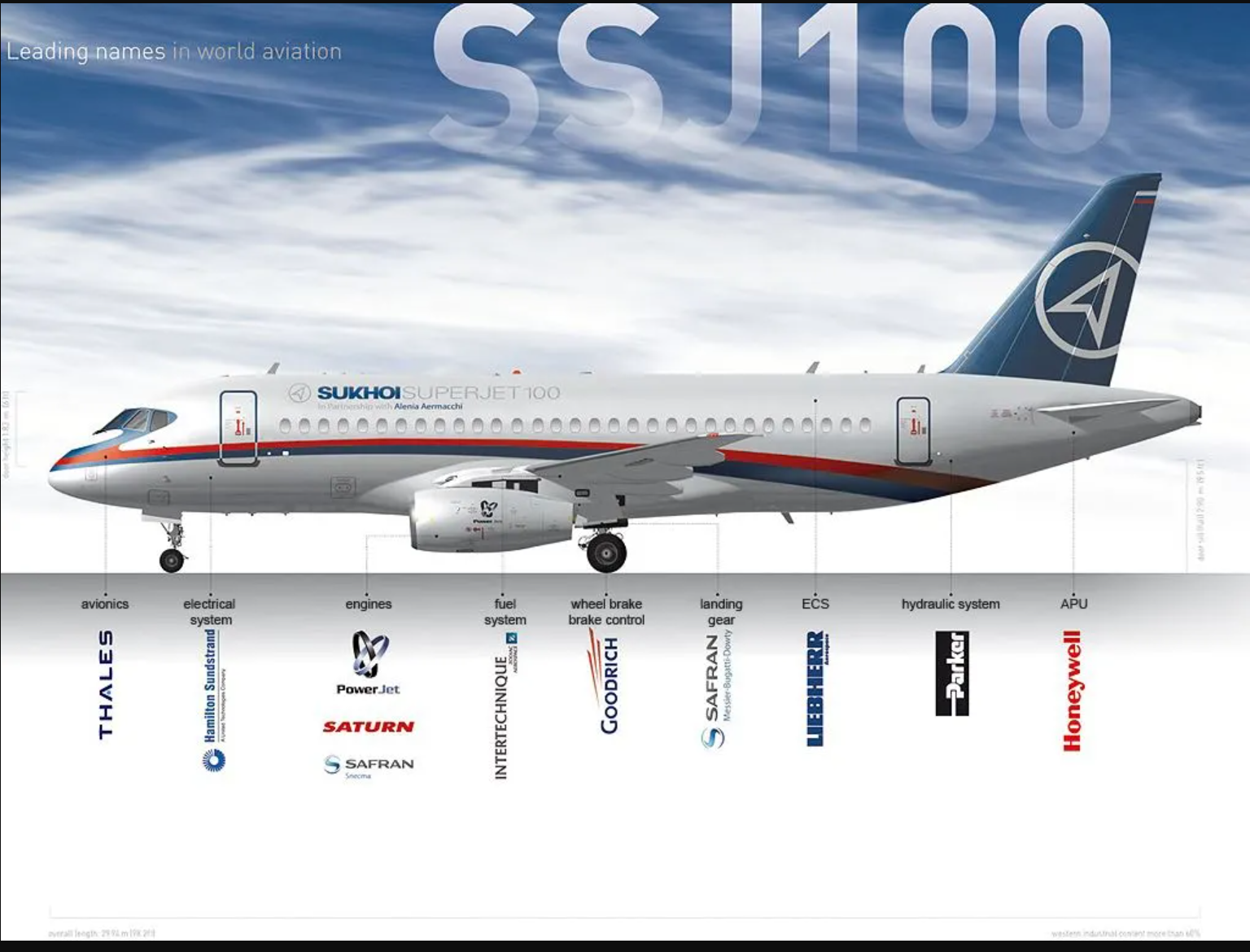
To replace the SaM146 in Russia, the PD-8 engine is being developed, based on the already certified PD-14. Its bench tests were completed in May 2022, after which testing of individual engine components on autonomous installations will begin. Manturov claimed that certification of the SSJ-100 with PD-8 would take place in 2023. The head of the Rostec state corporation (its structures are working on the project) Sergey Chemezov promised that the production of the imported SSJ-100 will begin in 2024.
It turns out that even in the ideal version, the Superjet project will receive the Russian engine only in a year and a half. There is no one to repair the installations currently on the aircraft – Safran in March refused not only to service the engines and supply new ones, but also to return the repaired installations. Minister Savelyev admitted back in March that there were no plans in the government in the event of failure of the SaM146 engines. At the same time, he called the SSJ-100 “not a very efficient aircraft from a commercial point of view” and recalled that the manufacturer was significantly disrupting delivery plans. Aeroflot ordered 150 aircraft, and by 2022 it managed to receive only 76. The rest simply did not have time to produce.
Even in the ideal case, the Superjet project will receive the Russian engine only in a year and a half
SSJ-100 with a high level of localization, passing under the Sukhoi Superjet New brand, is being developed by the same Sukhoi Civil Aircraft. Now the share of imported components in SSJ, according to experts, is about 70%. The company plans to reduce it to 3%, but the terms and responsibilities of the parties are very vague in the terms of reference. The authorities had to agree to such conditions, as the enterprises refused to take responsibility for the development. Interlocutors of The Insider in the market believe that, at best, it will be possible to release a new SSJ no earlier than 2025.
Hope for a semi-finished product. Bet on MS-21
Against the backdrop of the obviously unsuccessful expansion of the SSJ, the main hope of the domestic aviation industry was recorded as the medium-haul MS-21 (the main aircraft of the 21st century), a deep modernization of the Yak-42 with a capacity of 160 to 256 seats. Its development has been going on for more than ten years, but the commissioning of the liner is constantly being delayed.
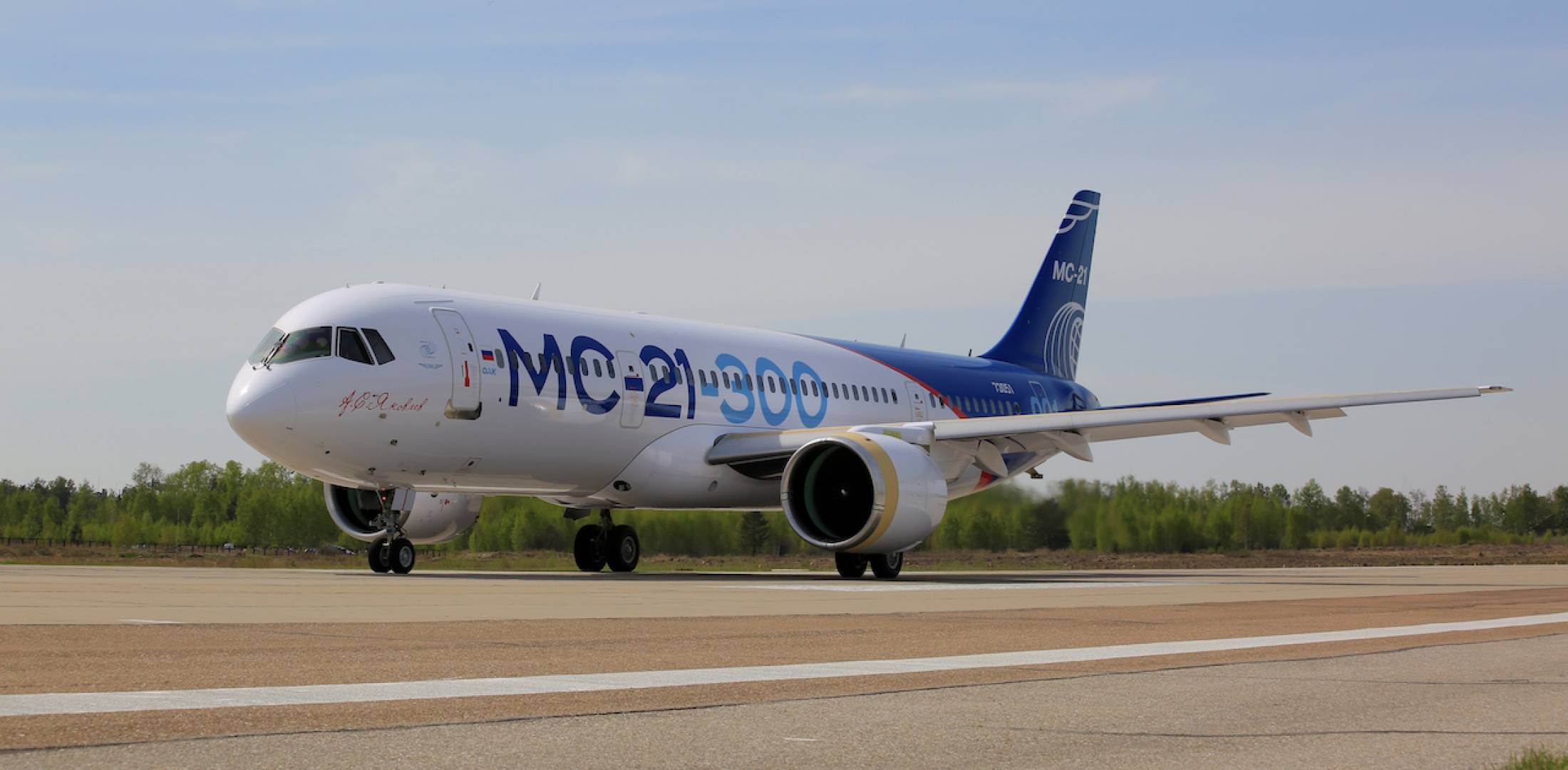
In 2012, Dmitry Rogozin, then Deputy Prime Minister, announced mass production in 2020. In August 2021, the head of the United Aircraft Corporation, Yuri Slyusar, promised regular flights on MS-21 in 2022. At the end of March of this year, Borisov announced the postponement of the deadline for another one or two years, explaining another delay with sanctions. In June, it was reported that the first MS-21s would arrive to the customer only in 2024.
During the development process, it was assumed that the MS-21 would receive the PW1431G engine manufactured by the American Pratt & Whitney, which is installed on Airbus and Embraer. After the sanctions due to the annexation of Crimea, the Russian side decided to transfer the liner to the Russian PD-14 engine being developed. Nevertheless, American engines were installed on prototypes of the MS-21, Pratt & Whitney managed to deliver four sets.
At the end of March, it became known that the manufacturer froze cooperation and would not even transfer paid engines. It is simply not safe to release aircraft with PW1431G on the line without the support of the company. By the standards of the industry, the installation is quite new, complete with a new aircraft, many small issues can arise for it, which cannot be solved on its own. А значит, уже через месяц новые лайнеры с американскими двигателями рискуют оказаться в бесконечном простое.
Что касается МС-21 с российскими двигателями, то пока он только проходит летные испытания. Его сертификация намечена на конец 2023 года. А даже если она состоится, даст ли кто-то гарантию, что чисто российский двигатель будет пригоден к регулярной эксплуатации, если совместный проект с одним из ведущих мировых производителей установок (двигатель от Safran) оказался исключительно неудачным.
Советский камбэк. Старые модели возвращаются
За амбициозными проектами, которые позволяли, в теории, претендовать на мировой рынок, российские власти практически игнорировали разработки позднего СССР. Речь в первую очередь о лайнерах Ту-204 (плюс модификация Ту-214 с увеличенными взлетной массой и нагрузкой) и Ил-96. На фоне шока, в который погрузилась отрасль, о них заговорили как о некой подушке безопасности, однако считать ее таковой вряд ли возможно, этот поезд уже ушел.
Для своего времени Ту-204 был неплохим самолетом, хотя и более дорогим в обслуживании, чем Boeing и Airbus. Поэтому когда у российских авиакомпаний появились деньги и возможность заказывать иностранную технику, они сделали разумный с точки зрения бизнеса выбор. В 2018 году авиакомпания Red Wings, на тот момент единственный эксплуатант Ту-204 на коммерческих перевозках, отказалась от его использования. Лайнер потреблял почти на тонну керосина за час полета больше, чем Airbus 321, а увеличенная масса приводила к дополнительным аэропортовым сборам.
Главная же проблема в том, что отсутствие заказов не предполагало модернизацию производства, то есть выпуск был технологически ограничен. В 2008 году удалось построить рекордные 10 самолетов, но чаще всего их выпускали менее 5 ежегодно. В результате в «Ростехе» признают — к 2030 году в лучшем случае получится создать 70 новых Ту-214. В свою очередь главный редактор портала «Авиа.ру» Роман Гусаров полагает, что и для 70 бортов придется приложить очень много усилий. С ним согласен и директор журнала «Авиатранспортное обозрение» Максим Пядушкин. Он напомнил, что если сейчас в год собирают до трех самолетов, то для увеличения выпуска в три раза следует заставить каждого поставщика отправлять в три раза больше деталей.
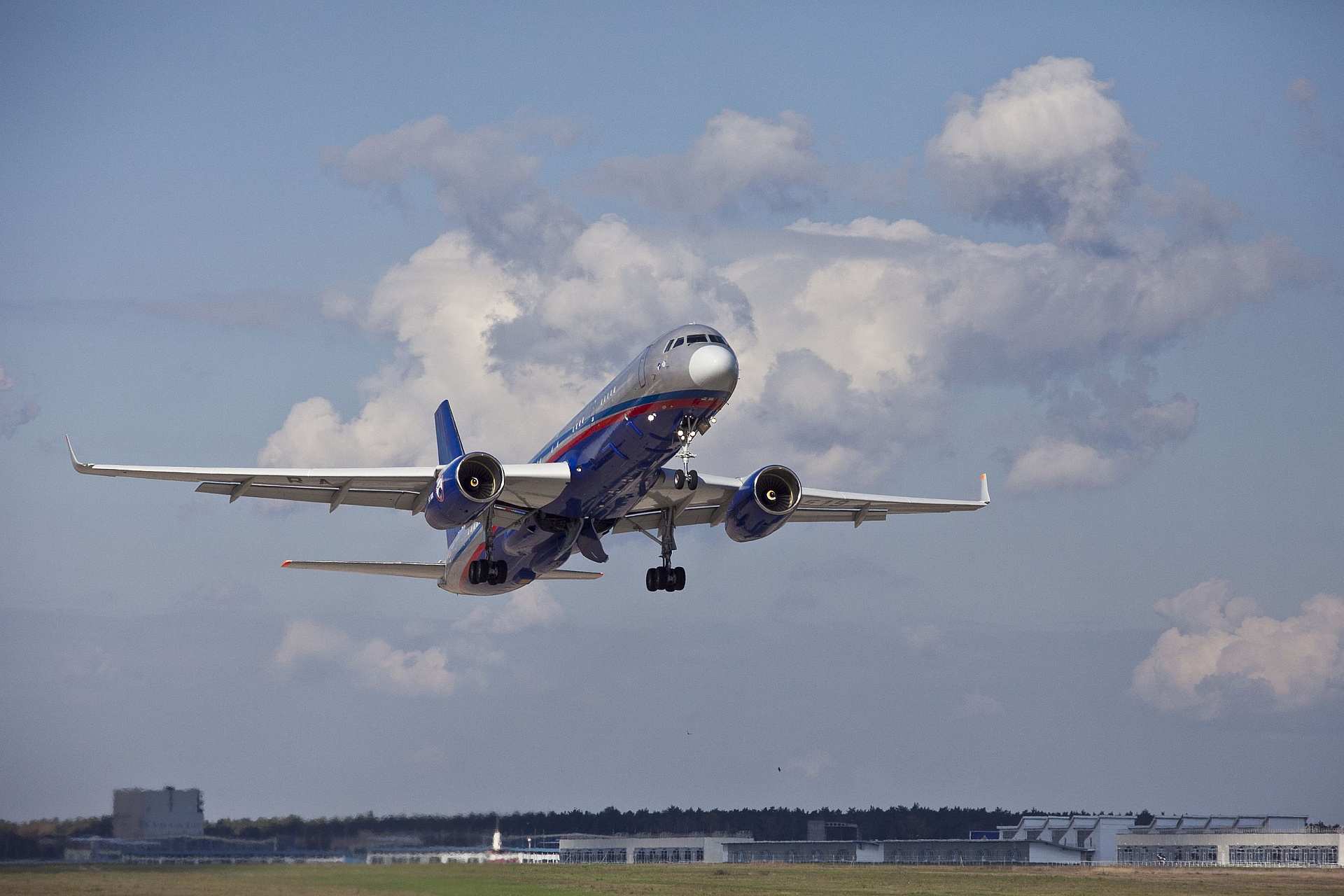
Поэтому слова Савельева о том, что Ту-214 может стать базовой моделью для «Аэрофлота» следует воспринимать скорее как сомнения в успешности SSJ New и МС-21. В теории современные лайнеры значительно выгоднее в эксплуатации, но если с ними возникнут проблемы, то преимущество получит компания, самолеты которой хотя бы летают.
Аналогичные аргументы можно привести и в отношении Ил-96. Разработанный в тех же 1980-х годах, он заметно уступает в эффективности западным аналогам, поэтому так и не был запущен в массовое производство. За более чем 30 лет число выпущенных бортов едва перевалило за 30. Главным достижением машины стало попадание в специальный летный отряд «Россия», который перевозит первых лиц государства, в том числе президента.
Позднесоветские самолеты уступали западным во всем
У самолета, рассчитанного на 300-435 пассажиров, четыре двигателя, в то время как Boeing 777 и Airbus 330 используют двухдвигательную схему. В перспективе новые модификации должны получить более экономичные двигатели ПС-90А3, после чего запланирован переход на два новейших двигателя ПД-35. Но сначала следует завершить разработку и создание самого ПД-35, после чего провести масштабную модернизацию и перепроектирование крыла Ил-96. Такие работы точно растянутся на многие годы.
О том, как скоро можно ожидать модернизации чего-либо, связанного с этими проектами, может рассказать история Ил-114-300. Этот советский проект возобновлен в 2015 году. Самолет рассчитан на перевозку 64 пассажиров. Его прототип выполнил первый полет только в декабре 2020 года. Тогда Чемезов уверял, что поставки в авиакомпании удастся начать в 2023 году. В мае этого года стало известно , что ключевые лица, отвечающие за проект, покинули свои должности, причиной отставок стало заметное отставание от заявленных планов.
Много слов и мало конкретики
Все разговоры о неизбежных успехах российской гражданской авиации касаются достаточно отдаленного будущего — 2030 года и позднее. Понятно, что строить прогнозы на такой срок в России — занятие специфическое, по крайней мере, ни один из оптимистических вариантов в нынешнем веке так и не сбылся. Борисов видит в сложившихся обстоятельствах шанс для окончательного импортозамещения, но, как это часто бывает с грандиозными планами, все выглядит так, что они всего лишь отвлекают от реальных цифр.
Идеальное выполнение программы развития авиапрома означает, что отрасль получит более 550 (за исключением малой авиации) новых самолетов. Это немногим более половины текущего парка, значит, предполагается, что как минимум каждый второй самолет продержится без обслуживания со стороны производителей в течение восьми лет. Каннибализация вряд ли позволит растянуть эксплуатацию на такой срок, а как отметил бывший летный директор «Внуковских авиалиний» Юрий Сытник, если деталь должна налетать 5 тысяч часов, то добавлять к этому хотя бы один час — попросту опасно .
При этом SSJ 100 придется каннибализировать в той же степени, что Boeing и Airbus. Российские предприятия, например, не в состоянии проводить ремонт двигателей. Силовая установка является сложным техническим устройством, защищенным множеством патентов. После определенного периода налета его разбирают, исследуют на царапины на рабочих частях, трещины, просадки размеров, проводят дополнительную наплавку, шлифование, сварку, некоторые детали подлежат обязательной замене. По каждой работе нужна документация, полученная французской компанией за годы разработки и обслуживания двигателей. Кроме того, Safran отвечает за блок управления, термопары, тензодатчики и многое другое, что не заменить с помощью российского производства. Каждая замена на неавторизованную деталь, которая может отличаться по допускам, требует полноценных и, что важно, длительных испытаний.
SSJ-100 придется разбирать на запчасти, как Boeing и Airbus
Работы слишком сложны даже в случае заметно более простых двигателей. Например, «Уральский завод гражданской авиации», в 2017 году выкупивший лицензию на производство четырехместного самолета DA42 для нужд Минобороны у австрийской Diamond Aircraft, продолжил заказывать двигатели и их обслуживание у производителя. Их локализация предполагалась только в 2024 году, да и она задумывалась при условии выкупа документации от производителя за дополнительные деньги.
Но даже сокращение парка в два раза выглядит оптимистичным вариантом, ведь основные надежды российский авиапром связывает с моделями лайнеров, которые даже не сертифицированы. Предполагается, что процесс пройдет без проблем, а через пару лет начнется их серийный выпуск — и тоже все немедленно и без сучка без задоринки.
Объем работ, которые необходимо срочно выполнить, можно оценить по сумме, запрошенной ОАК на окончательное импортозамещение Sukhoi Superjet. Производитель хочет за 50 млрд рублей освоить изготовление 64 наименований деталей с помощью 24 компаний. По оценке концерна, заменить требуется 70% комплектующих — такова реальная доля импорта в нынешнем лайнере. Тут следует принять во внимание, что в таком графике хочет работать компания, которая долгие годы проваливала задачу поставок комплектующих SSJ-100 в российские и иностранные компании и не исполняла планы по объемам выпуска.
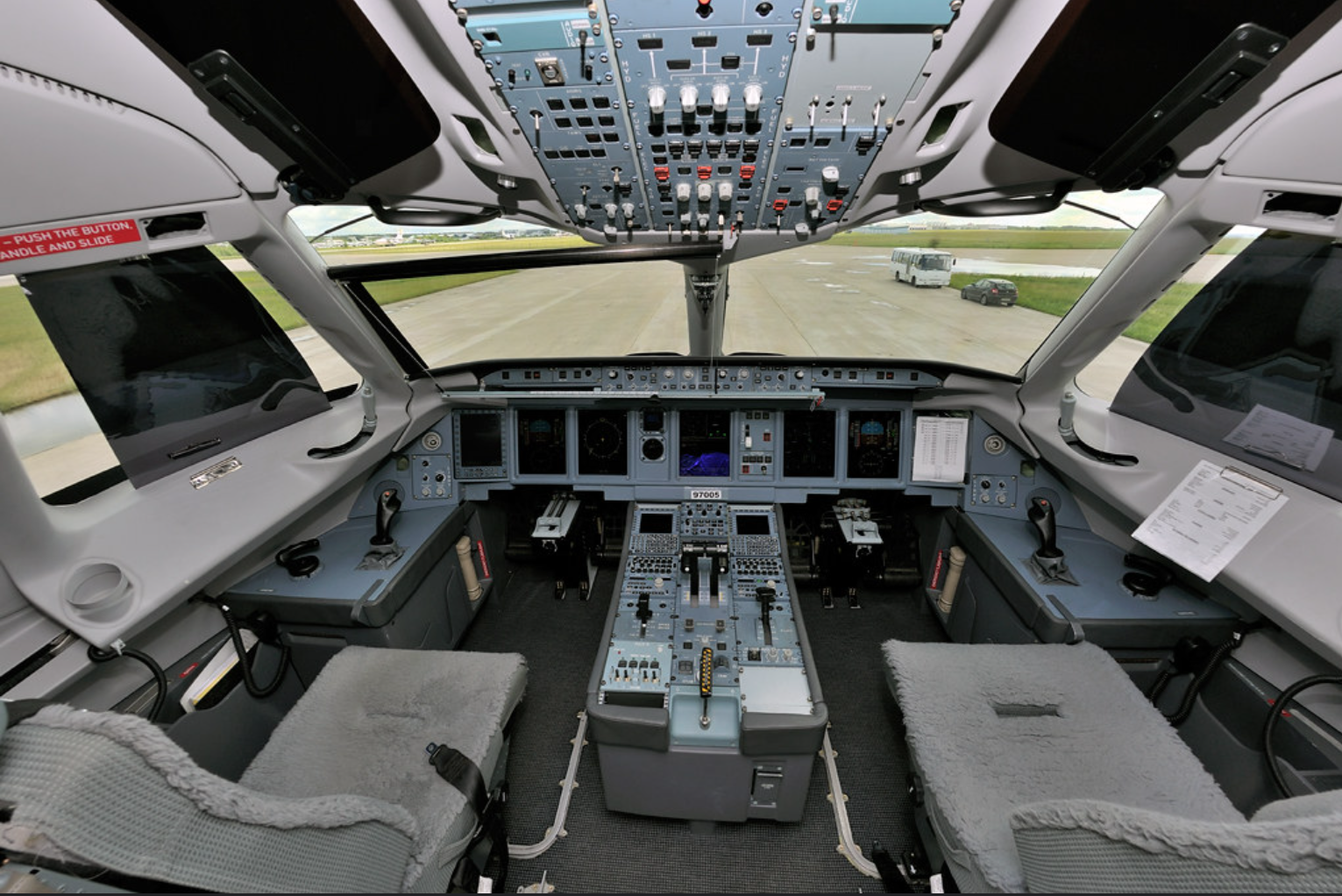
Нет процессоров — нет авионики
В случае с МС-21, который сразу планировался куда более локализованным, тоже вряд ли удастся избежать подводных камней. В первую очередь это вопрос авионики — электронных систем на борту судна. Еще в 2015 году было анонсировано , что импортозамещением в этом вопросе займется концерн «Радиоэлектронные технологии», входящий в госкорпорацию «Ростех». Тогда начало серийного производства и поставки разработанного оборудования были запланированы на 2016 год. По состоянию на 2020 год авионику покупали у иностранных поставщиков — Honeywell, Elbit Systems и Thales. В марте 2022 года стало известно , что концерн только приступает к реализации практической части, но насколько растянется процесс испытаний и согласований при замене одних систем на другие, сказать сложно. По оценкам собеседников издания, реальные сроки вывода лайнера с отечественной авионикой в серию — 2026-2027 годы.
Но проблема может носить и более фундаментальный характер. Российская бортовая цифровая вычислительная машина (БЦВМ) БВС-1-1, которая используется для МС-21, оснащается американскими процессорами freescale. В качестве возможной замены назывались БЦВМ на базе процессора от ИМА БК (предназначена для военных самолетов Су-57 и ПАК ФА). Однако тот использует разработку НТЦ «Модуль» СБИС К1888ТХ018, созданную по технологии 28 нанометров. Производить такие современные процессоры Россия самостоятельно не может . Значит, и в этом случае придется искать иностранного поставщика. Поскольку систему предполагается использовать и в военных целях, то США, очевидно, попытаются заблокировать все возможности для этого. Как показывает ситуация с процессорами «Байкал» и «Эльбрус», для этого у Вашингтона есть все возможности.
Ни гвоздей, ни нормального контроля
О проблемах импортозамещения вскоре после вступления в силу беспрецедентных санкций и изучения их последствий заговорили на всех уровнях. Символом таких разговоров стало возмущение спикера Совета Федерации Валентины Матвиенко по поводу импорта в Россию даже гвоздей. Ее поддержал и сенатор Андрей Клишас, один из авторов путинской Конституции. «Кроме бравурных отчетов отраслевых ведомств нет ничего. Наши люди это видят и по товарам народного потребления, и во многих других сферах», — поставил он свой диагноз в середине мая.
По традиции эти проблемы принято связывать с коррупцией, ленью чиновников и хитростью бизнесменов, а в качестве лекарства предлагается усилить контроль и увеличить число проверок. Вот только в случае с авиацией трудности, как видится, носят более фундаментальный характер в силу сложности технологий. К такому выводу подталкивает исключительно малое число компаний в мире, конкурирующих на рынке гражданских перевозок.
Россия сумела создать относительно неплохой самолет, хоть и проигрывающий конкуренцию, в глубокой кооперации с лидерами рынка, но не решила проблему сервиса, которой занималась самостоятельно. Предположение, что в условиях разрыва технологических цепочек она совершит сразу несколько скачков, выглядит более чем смелым. Такого опыта Россия еще не имела, и, откровенно говоря, его не имеет ни одна страна в мире.
Например, попытки Японии запустить собственный проект, по всей видимости, провалились. Почти 20 лет назад правительство профинансировало исследовательскую программу создания регионального двухдвигательного реактивного пассажирского самолета Mitsubishi Regional Jet. В 2007 году был представлен концепт, а первый полет был запланирован в 2011 году. В реальности лайнер взлетел только в 2015-м, и с того момента разработчик постоянно переносил передачу первого борта в авиакомпанию. В 2020 году компания сократила 95 процентов сотрудников, занятых в разработке. По состоянию на 2022 год проект заморожен из-за многочисленных недочетов и необходимости дорогостоящих исследований.
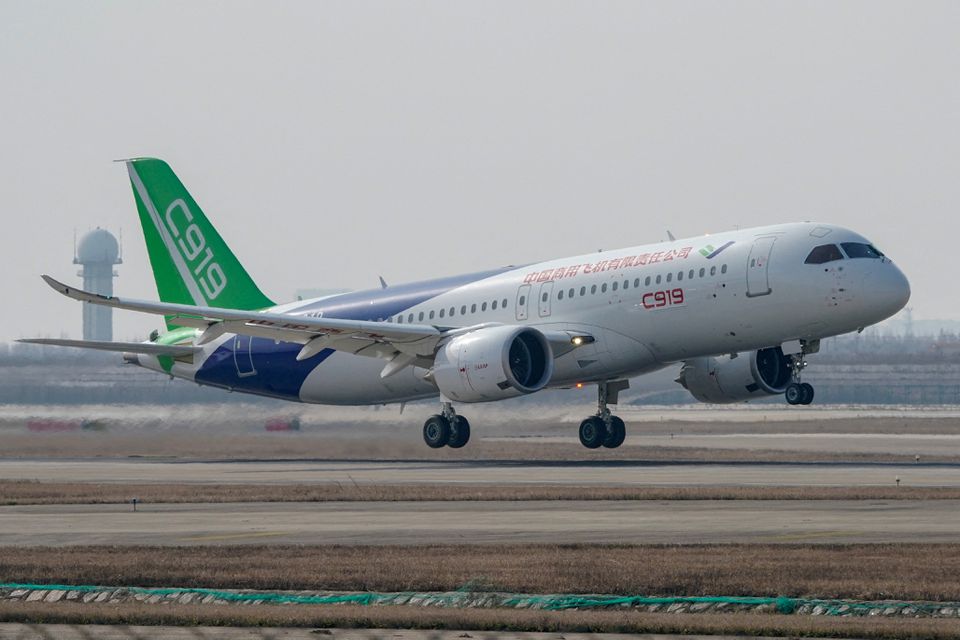
В теории «выручить» Россию с самолетами мог бы Китай, который уже готовится начать эксплуатацию C919 — крупнейшего лайнера, когда-либо построенного и спроектированного китайской компанией. Модель уже сертифицирована, поставки планируется начать до конца года. Генеральный директор группы Airbus Гийом Фори допускает, что C919 сможет навязать конкуренцию европейскому автопроизводителю спустя какое-то время, хотя и указывает, что сначала Китай должен нарастить темпы производства и доказать надежность новой машины.
Однако есть важный нюанс. Подавляющая часть важнейших технологичных узлов и агрегатов C919 разработаны и производятся в США и Европе, либо в сотрудничестве китайских компаний с мировыми лидерами. За последние полгода Пекин неоднократно доказывал, что не собирается ради решения российских проблем вступать в конфликт с Западом, поэтому поставки C919 в Россию практически исключены. Тем более у самолета есть огромный внутренний рынок, наполнить который для КНР значительно важнее.
Под красным флагом ICAO
Отечественная манера решать вопросы авиации в мире воспринимается однозначно. В конце сентября Международная организация гражданской авиации (ICAO) закрепила за российской авиаотраслью «красный флаг», что говорит о существенных опасениях в вопросе безопасности полетов. Из почти 200 стран, прошедших аудит, такой «чести», помимо России, удостоилось только королевство Бутан. Эксперты ICAO утверждают, что российские власти недостаточно контролируют ключевые вопросы безопасности, из-за чего они почти на четверть понизили оценку летной годности судов в стране.
Основная проблема заключается в двойной регистрации судов. Сотни лайнеров значились в реестрах иностранных государств, после чего были в одностороннем порядке переведены в российский. Такая ситуация существенно снижает безопасность полетов. Кроме того, ICAO реагирует на отказ производителей самолетов от работы с российскими авиакомпаниями, что делает невозможным выполнение полетов с тем же уровнем безопасности.
Решение грозит запретом полетов российских компаний во многие страны мира, хотя этот вопрос каждое государство рассматривает самостоятельно. А вот реакция Москвы на действия ICAO оказалась более чем предсказуемой — Минтранс отозвал приглашение президенту совета ICAO Сальваторе Шаккитано на празднование 100-летия гражданской авиации России. В ведомстве указали , что пошли на такой шаг из-за «политизированности» действий организации.
По состоянию на осень 2022 года вопрос с самолетами решается так же, как и большинство других возникающих трудностей. Из-за сокращения рейсов за рубеж и закрытия аэропортов южных городов проблемы на рейсах внутри страны пока незаметны (для них нынешний парк избыточен), что подается как признак стабильности. Однако в момент, когда самолетов хватать перестанет, властям придется делать выбор — сокращать число рейсов, признавая провал, или снижать требования безопасности. Первое будет признанием собственной слабости, второе — чревато авиакатастрофами. Ответственность за которые, скорее всего, понесут вовсе не те люди, которые реально виноваты в том, к чему в 2022 году пришла российская гражданская авиация.


